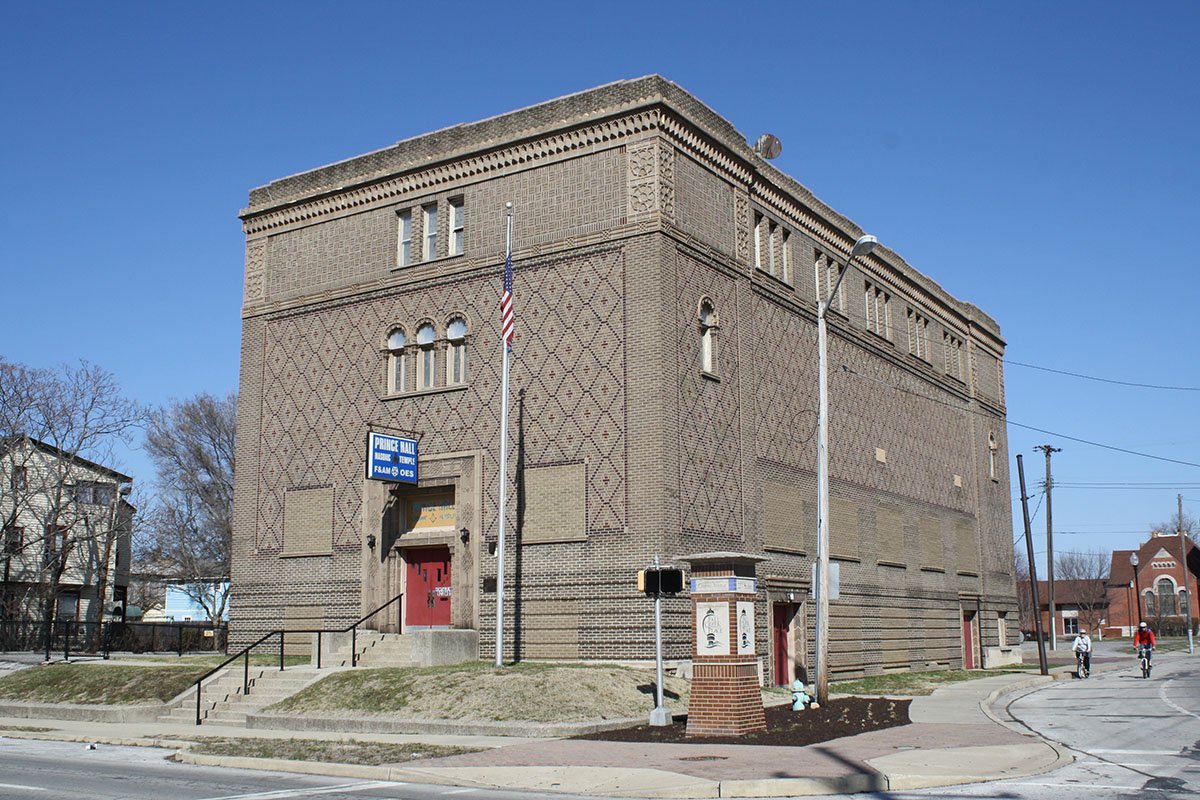8. Fraternal Organizations Major Part of City's Social History
James Glass
Column that appeared in the Indianapolis Star onJohn Bartlow Martin, a Hoosier newspaper writer of the 1940s, once wrote that Indiana was a state of joiners. Perhaps no city in the state represented that characteristic more than Indianapolis, which by 1930 boasted some 194 private clubs, societies, and business associations, and nearly 350 fraternal lodges and chapters. The fraternal lodges were the oldest and most pervasive vehicle for joining and included by the early 20th century many bodies with exotic names: Independent Order of Odd Fellows, Knights of Pythias, Improved Order of Red Men, Knights and Ladies of Honor, Knights and Ladies of the Maccabees, Protected Order of Knights of Cosmos, Tribe of Ben-Hur, Household of Ruth, Ancient Order of Hibernians, Grand Degree of Pocahontas, and United Ancient Order of Druids. In addition, there were the more familiar Free Masons, Loyal Order of Moose, Benevolent Protective Order of Elks, Knights of Columbus, B’Nai Brith, and Fraternal Order of Eagles. Of all these, the largest were the Masons, Odd Fellows, and Knights of Pythias. By 1930, all three of these organizations operated numerous male lodges in the city—33 Masonic “blue” lodges, 30 Odd Fellow encampments and lodges, and 18 Pythian lodges. They also sponsored sizeable numbers of separate female lodges—17 Order of the Eastern Star Masonic lodges, 18 Order of Rebekah lodges, and 9 Pythian Sisters lodges. Because the major fraternal bodies would not admit African American members during the 19th and early 20th centuries, African Americans in the community organized separate Masonic, Odd Fellow, and Pythian organizations. By 1930, there were 13 Prince Hall Masonic lodges in Indianapolis, 18 “Colored” Knights of Pythias lodges, and probably an equivalent number of African American Odd Fellow bodies.
Part of the appeal of fraternal lodges for men and women a hundred years ago were elaborate rituals and pageants that were staged for new members in impressive lodge halls. The Masons, as the largest organization in the city, had the most imposing buildings—a Masonic Temple, Scottish Rite Cathedral, and Murat Shrine Temple.
The Odd Fellows and Pythian lodges began a dramatic decline in numbers after World War II. The trend accelerated in the 1960s, as the World War I generation, which had especially supported them, began to die. The Masonic membership attracted many World War II veterans and hit a high point of more than 100,000 statewide in the 1970s, but has since fallen to 81,500. In Indianapolis, the number of local Masonic lodges has fallen to approximately 22, with about 13,000 members. The African American Prince Hall Masons now have 8 lodges in the city.
All of the fraternal organizations stressed service to the less fortunate in the community, brotherhood and fellowship among members, and upright, moral behavior. The Masonic bodies today devote much of their energies to major charitable projects. The Murat Shrine, a Masonic organization, supports orthopedic and burn hospitals for children, the Scottish Rite Masons support a learning center for dyslexic children in Indianapolis and research into conquering Schizophrenia, and the York Rite Masons support treatment of eye diseases in children. To provide for the social needs of its 18,000 members, the Scottish Rite Cathedral organizes drama productions, an orchestra and choir, dances, and charitable fund-raising functions, while the Murat Shriners sponsor drill teams, parade and circus units, and social activities for their members that also benefit their charities.
Why the decline in the fraternal numbers? Jeffrey Saunders, executive director of the Indianapolis Valley of the Scottish Rite Masons, explains what has happened to the Masonic organizations this way: World War II veterans were part of a big team experience during the war and wanted to retain those associations in fraternal organizations when they returned. Their children, the “baby-boomers,” were not joiners, and that caused a drastic decline in Masonic numbers over the past 20 years. He is hopeful that Generation X and those younger will find an appeal in fraternal bodies, like their grandparents. Similarly, Otis Tyler, grand secretary of the Prince Hall Grand Lodge of Indiana, states that many African American young men who attend Historically Black colleges and universities in the South and join fraternities there, frequently find a similar fellowship in the Prince Hall Masons in Indiana.

Prince Hall Masonic Temple, 2016. James Glass
